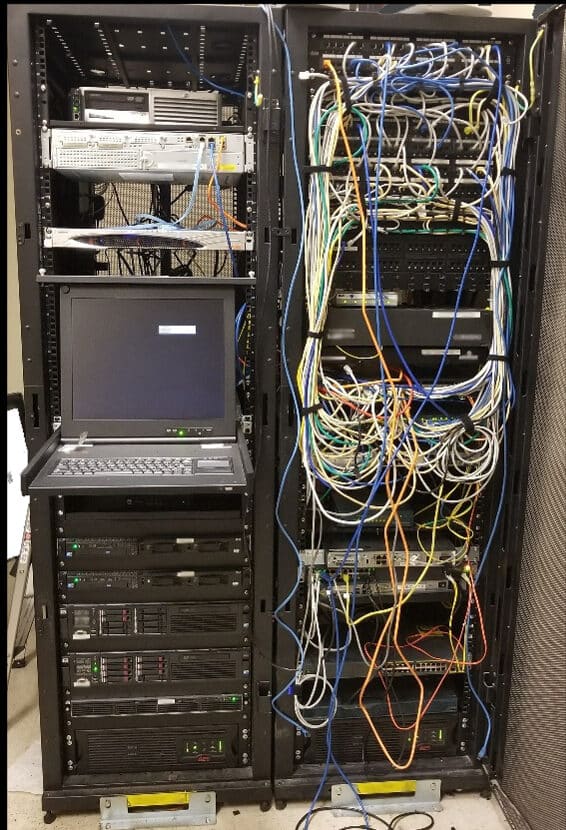By 2025, 75% of data will be moved off the cloud. It seems like the cloud just became the major method of data storage. But where are we heading next?
The answer to that question is Edge Computing.
Edge computing is an effective networking model that your business can use to process data. This article will help you understand what edge computing is and how it can benefit your business.
What Is Edge Computing?
Technology is changing everything around us every day, including computing and data storage. In traditional computing, data processing and storage rely on a “hard-wired” computer as the central hub. This means that data must be transmitted to the central server for processing to transmit.
Up until the advent of the cloud, this “central hub” approach has worked well enough, because most peripheral devices lack the storage capacity and power to store data.
Currently, cloud computing helps decentralize the storage of data. Modern edge devices with enough power and storage capacity to store data are also changing the computing landscape.
Edge computing is the idea that data storage and processing now happens on the “edge” of the network via peripheral devices. This means that data processing and gathering can occur at the same point within the network.
This makes edge computing much faster, as there is no need for long-distance client-server communication within the network.
Advantages of Edge Computing
Some naysayers will downplay the progress and benefits of edge computing. Yes, there are some drawbacks. And there will be “growing pains” like with any new technology.
That being said, however, edge computing allows for much simpler, more efficient computing networks and much more.
Let’s look at the ways edge computing will improve your network’s performance, and improve your business.
Speed
As the saying goes: “time is money.” The faster, and more efficiently, things can get done in your business, the better. Depending on the industry you work in, a mere delay of a second could be the determinant between life and death in a hospital, for example.
Take hospitals, for example. Even the shortest delay can cause major problems in an ambulance, or an emergency room. Fast, efficient travel of data could mean the difference between life and death.
If you’re in the data provider space, the benefits of edge computing go without saying. Your reputation is built on speed and accuracy.
Delays in data transmission could result in frustration for your clients. We think you can see what that would mean for your business.
Speed is more than just a need in your business; it’s a necessity.
Edge computing revolutionizes speed by shortening the distance between data transmissions. Less distance for data to travel within your network means less time and faster data processing.
Edge computing improves the speed of your end-users, considering downtime can cost your company thousands if not millions of dollars.
Security
In edge computing, security risks are distributed throughout the network. A hacker can’t bring the entire network down just by infiltrating one point on the network.
The traditional network architecture, where data is centralized within one server, makes it vulnerable to network attacks and power outages.
Edge computing, on the other hand, distributes data over several peripheral networks. As a result, any successful malware attack on the network is shut down by isolating the affected network.
The result? Your business remains operational, working off of the data on other parts of the network, while the affected portion of the network is repaired.
Cost and Scalability
Building a data center might be your company’s dream. However, it is expensive to build up and maintain, making it nearly impossible for future growth. The centralization model insists on a start afresh to expand the center.
Traditional computing networks can limit your business’ growth. If you insist on growth, you will have to bear the costly process of searching for more resources and starting afresh. You will need to upgrade the servers and plan for new maintenance procedures.
Modern edge computing is scalable. This technology allows your business to grow without the necessity of hiking costs. When you expand your business, you just need to bring it on board as a new network without increasing the bandwidth.
Reliability
Without having to rely on a central server, your business can operate better and safely. Long geographical locations could be a great source of network problems for your business which often happens when you need it most. The result may temporarily or even permanently paralyze your business.
Edge computing creates a sense of reliability by ensuring communication between your edge data centers and end users. In cases of a network problem within the system, the periphery continues working as they have proper processing functions. The technology protects your business from possible customer embarrassment.
Cons of Edge Computing
Below are the pain points of edge computing in your business. Many of these are being addressed by various providers.
Security Breaches
Although edge computing has a security benefit by distributing the network’s risk, it creates security breach concerns within the same network. All peripheral devices do not have equitable security capabilities. Therefore, cyber attackers could exploit vulnerable devices to access the network.
Geographic Disparities
All regions are not the same in terms of skilled labor, network opportunities, and resources. Therefore, some areas may have fewer devices connected to the network or employees facing remote problems. The result of this is the company not being able to process enough data in some regions.
Loss of Data
Edge devices usually discard “useless data” after they finish processing it, limiting the chances of some vital information reaching the central server. Unlike edge devices, in traditional computing, central servers receive all the information, thereby creating a form of backup.
The traditional computing architecture helps much, especially when the data lost isn’t necessarily “useless”. The result makes the edge computing model very frustrating. It can be expensive, especially if the information lost is vital to the company.
Uses of Edge Computing
The number of uses for edge computing keeps growing day in and day out. Below are the most visible and important examples.
Autonomous Vehicles
Technology is taking over everywhere, including on the road. Different car manufacturing industries are/have invested millions if not billions of dollars in building cars of the future; driverless cars. For the effectiveness of this technology, the cars will need data involving the neighboring environment.
What’s more, when on the road, the cars will need to observe the direction, and constantly communicate with each other among other functionalities. The cycle will not end there but will be transmitted to the manufacturers for maintenance purposes, among other reasons.
You will only achieve that dream by using edge computing architectures. As a result, the vehicles will be communicating and processing information within themselves without wasting a lot of time. It reduces the chances of lag which could cause fatal accidents.
Smart Homes and Cities
Smart homes have intelligent devices that constantly communicate. A lot of smart homes make a smart city where devices are constantly communicating using data collection sensors. They help you access important information like traffic patterns and critical issues in the city.
It becomes rhetoric through traditional computing architecture as it cannot, with immediate response, handle all the devices within its network. Edge computing enables this through network distribution, and devices don’t have to pass through the central server. They can communicate among themselves in real time.
Monitoring of Patients
The healthcare industry stands to benefit the most from edge computing.
Doctors, hospitals, and nurses use monitoring devices that contain large amounts of unprocessed data. The data is in a database or a third-party cloud which could generate security issues.
Using edge computing, the hospital could process the data locally within its network. As a result, it ensures data security and privacy both for the health practitioners and the patient. Also, using artificial intelligence, the edge provides timely alerts to practitioners about patient complications.
The Future: Edge Computing and IoT
A lot of manufacturers have invested in making IoT devices that end up connecting as edge networks. Gartner estimates that 75% of data will be processed through edge devices by 2025.
People are getting used to the term “smart homes” making the manufacturing companies from televisions sets, bulbs, watches, and other devices produce IoT products. Unfortunately, this is a migration, and businesses resistant to this change will either catch up later or capsize in the sea of the forgotten.
This enormous technology, however, comes with great responsibility amid a cup of challenges. One of the challenges is security, which could pose a considerable threat to the data generated from the devices in the network.
Final Verdict
Edge computing could be the solution your business has been seeking for years. It provides enormous benefits that a business that cares to grow should focus on. Some of the most visible benefits that edge computing offers include higher processing speed and system reliability.
If you have more questions about how edge computing works or are interested in our services, give us a call. You can also check our services page, or browse the resources on our blog.
‘Manufacturers have invested in making IoT devices that end up connecting as edge networks. Gartner estimates that 75% of data will be processed through edge devices by 2025’


